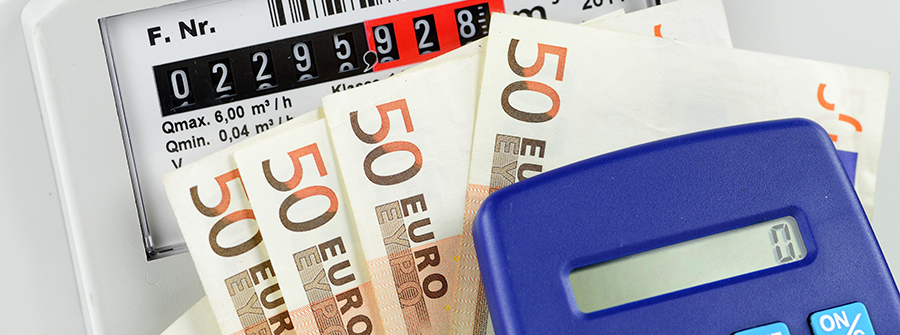
Dual day and night rates: when do they apply?
In Belgium, choosing to have a dual meter at home can offer several benefits on a few conditions. The first one is to consume during off-peak hours, therefore respecting the time periods.
The dual meter is the most widespread type of electricity meter in Belgium. But do you know exactly how it works? Do you know if day/night rates are cheaper than conventional rates? To find out, keep on reading!
The principle of a dual meter
The day/night meter is special in that it has two indices: one for peak-time consumption (daytime, weekdays) and the other for off-peak consumption (night time and weekends). The advantage of this system is clearly financial: at off-peak times, electricity is cheaper. This means that households which endeavour to use their most energy-consuming appliances at off-peak times will likely reduce their electricity bill.
What must I do to enjoy the day/night rates?
If you currently have a standard meter and would like to replace it with dual one, you must address your distribution system operator (DSO). In addition to transporting electricity to households from the high-voltage grid (managed by Elia), it is responsible for several technical services. These include commissioning, increasing meter power, new connections to the local electricity grid, and, therefore, also replacing the meter.
Compare the prices per kWh for peak and off-peak hours
Having replaced the meter, you will enjoy the dual hourly rate provided you have amended your electricity contract or have canceled your current energy contract to subscribe another one. Take this opportunity to compare the prices of all energy suppliers to increase your future savings. Of course, since the price of electricity depends on the supplier and the contract, it is in your best interest to find the best electricity deal on the market and subscribe to it.
Keep an eye on your consumption habits
In addition, once the dual meter is activated, you must adapt your consumption habits. From now on, you must use your washing machine, dryer and dishwasher at night and during weekends! Otherwise, the benefits of the day/night contract are lost, as is the prospect of paying less.
Discover all the energy suppliers promotions!
Compare electricity and gas prices and switch supplier for free in just a few clicks on Energyprice.be.
Peak and off-peak time periods
Peak and off-peak hours are calculated differently depending on the distribution system operators and sometimes on the postal codes. If you do not know which DSOs operate in your area, you can use our tool and then contact the organization in question to find out the established periods.
- AIEG: 085/27.49.00
- AIESH: 060/45.91.60
- Fluvius: 078/35.35.34
- ORES: 078/15.78.01
- Régie d’électricité de Wavre (REW): 010/22.42.43
- RESA: 04/220.12.11
In most cases,
- Peak periods for electricity are from 7 am to 10 pm on weekdays (Monday to Friday);
- While off-peak periods are from 10 pm to 7 am on weekdays (Monday to Friday) and the weekend.
Otherwise, off-peak hours can be as follows:
- From 9 pm to 6 am during the week and from 9 pm on Friday until 6 am on Monday during the weekend.
- From 10 pm to 7 am during the week and from 10 pm on Friday until 7 am on Monday during the weekend.
- From 10:30 pm to 7:30 am during the week and from 10:30 pm on Friday until 7:30 am on Monday during the weekend.
- From 11 pm to 8 am during the week and from 11 pm on Friday until 8 am on Monday during the weekend.
If you live in the Brussels Region, you will find the list of municipalities and peak and off-peak periods on the Sibelga website (PDF).
If you live in Flanders, you can find a list of towns where the off-peak hours apply from 9 pm to 6 am on the website of Fluvius.
DSOs ORES and REW also published the timetables for peak and off-peak hours on their respective websites.
Unfortunately, it is not possible enjoy a time period other than the one established by your DSO. Remember, therefore, to stick to it by setting your devices to valid off-peak hours.
Are bank holidays considered as off-peak hours?
Note that bank holidays that fall on a weekday are not considered off-peak hours but as peak hours. However, when they are at weekends, off-peak rates are valid.
Peak and off-peak rates
Are you interested in the option of peak/off-peak hourly rates? Then you need an overview of the kWh price that may be charged to you! There’s no secret to getting a good deal: you need to know and compare the electricity prices of several suppliers. Here are some examples:
| Supplier | Contract name | Single hourly rates | Dual hourly rates (c€/kWh) | Annual subscription (€/year) | |
|---|---|---|---|---|---|
| Day | Night | ||||
| Engie | Easy Variable | 16.91 | 17.69 | 14.50 | 58.30 |
| Luminus | ComfyFlex | 16.81 | 19.25 | 14.19 | 63.60 |
| TotalEnergies | Pixel | 15.14 | 16.76 | 13.88 | 35 |
*The rates mentioned in the above table correspond with the estimated yearly prices, in accordance with the methodology of the VREG.
You need to find out whether these electricity prices will be better for you and if it is worth your while changing from a standard meter to a dual meter. In Flanders, the DSO Fluvius only installs smart meters. These give you nevertheless the choice between single rate and dual rate, which can be programmed remotely by the DSO for cheap.
Given that changing meter can typically costs between 88 and 400 euros (outside of premiums and free replacement programs), this is not a decision to be taken lightly, especially since distribution costs are also higher with a day/night meter than with a standard meter. So, it is important to first calculate the return on investment before taking the plunge.
Is the dual rate about to disappear?
In Belgium, there now exist “dynamic” contracts. With these, you pay a price per hour for your electricity according to the prices on the wholesale market. The cheaper time periods generally coincide with the off-peak hours of the dual rate.
Then there is the capacity rate. When the Flemish energy regulator VREG announced its introduction, this new system was coldly received. Still, the capacity rate comes into effect in January 2023. Its main goal is to spread the network costs as fairly as possible among consumers. Someone who consumes a lot of electricity during peak network loads actually pushes the grid towards its limits. Thanks to this new capacity rate, which will charge consumers according to their average monthly peak, the VREG aims to make consumption during peak loads more expensive and reward the Flemish citizens who spread their electricity consumption.
According to the VREG, with the capacity rate, the dual rate will effectively belong to the past, at least for the network costs. It remains to be seen how this project will be implemented in practice. Meanwhile, it is still of utmost importance to take into account the peak and off-peak hours, to compare energy contracts thoroughly and to choose the one with the best possible rate. With this aim in mind, do not hesitate to call our advisors for free, who will help you with pleasure.
Which energy supplier suits you best? Find it out with a simulation!
Also read on our blog

In mid-March, the government decided to reduce the VAT on gas and electricity bills in order to counter the dramatic rise in energ…

The Colruyt group is now offering green electricity and natural gas to Walloon and Flemish citizens. This new service is handled b…

In July 2018, the Walloon and Brussels Parliaments voted in favor of installing smart meters – also known as communicating m…

How can you estimate your gas consumption or calculate it precisely? It’s simple – read your meter carefully and analyze the right…

